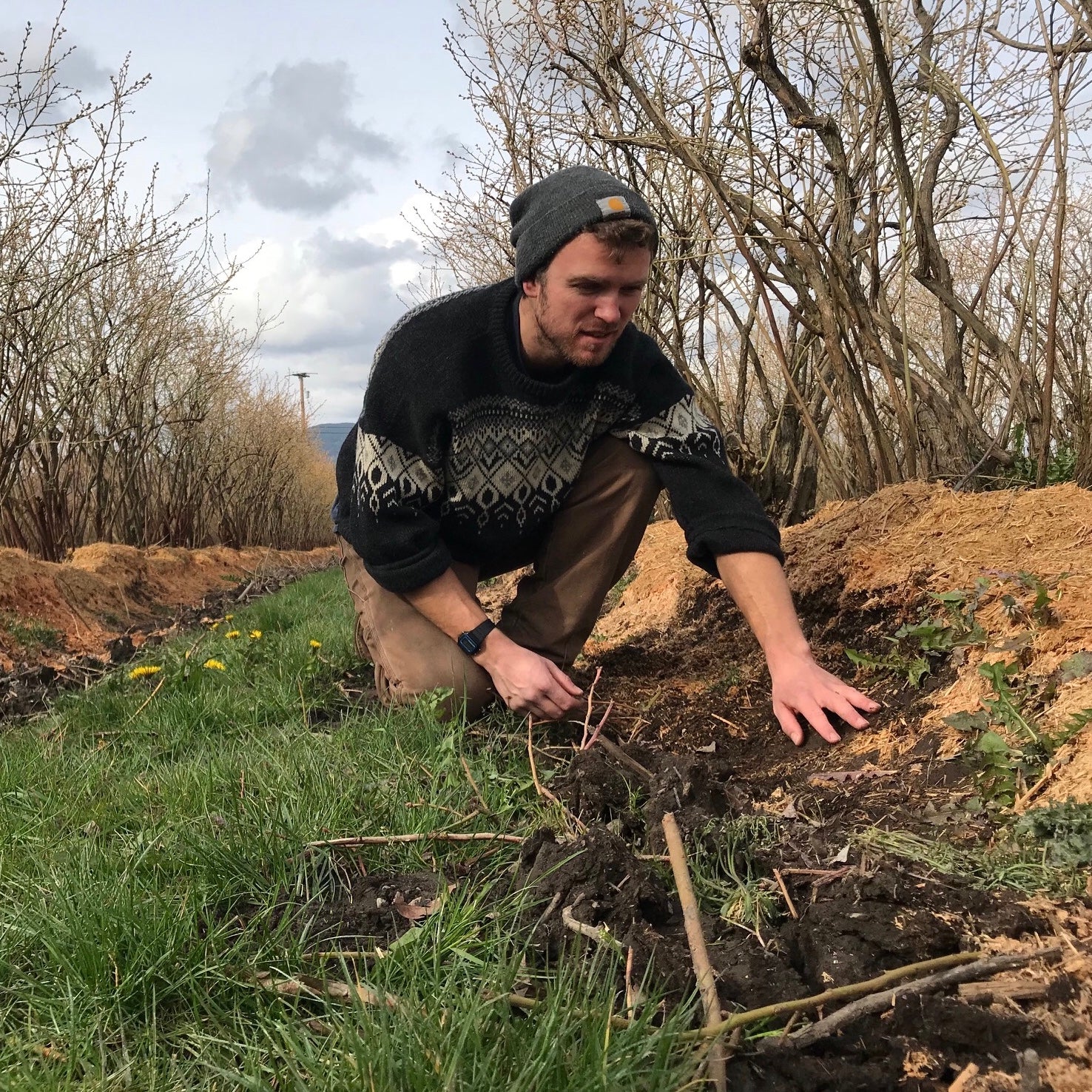
The Endless Search for the Mummy Berry
Spring is in the air here at Bow Hill. The water has receded back into the slough, the grass is beginning to thicken up and the frogs are louder than ever. Buds are starting to emerge on the bushes and soon we will be in a sea of flowers, ripe for pollination. No, we won't have fresh blueberries for another few months, but there are many things we must do to be ready.
If it's nine-miles of hand weeding, then it’s safe to say that it’s a nine-mile hunt for any signs of mummy berry. Mummy berry is a big concern for organic blueberry farmers, especially those who live in cool, wet climates such as the Pacific Northwest.
Mummy berry is a fungal infection that can wipe out a significant amount of the crop. All year long we are constantly on the lookout for signs of an infection; the most famous sign and namesake for the disease are the small pinkish-white dried (mummified) berries that form on the bush during the harvest season. In early spring, signs of mummy berry in the fields come in the form of the apothecia–a hardened, overwintered fruiting body of the fungus that may have fallen to the orchard floor last fall. These fruiting bodies, which look like little brown blueberries sprouting from the soil, are actually tiny mushrooms (see photo below). These mushrooms have the ability to discharge 650,000 ascospores! These ascospores then latch onto the freshly budding plant and can begin this years’ infection cycle. Cooler and wetter conditions are the best for the viability of the ascospores, making this spring perfect for the spread of the disease.
If we see any signs of mummy berry in the summer and fall, we work towards suffocating the mummies with sawdust and/or compost. In the spring, we spray organic approved anti-fungals–such as lime sulfur, thyme oil (which makes the whole farm smell like an Italian restaurant) and an array of antibacterial products mixed with knot weed. Conventional blueberry farmers would eradicate this infection with a systemic fungicide, such as Indar, before they even see signs of it. Though it's riskier, we prefer to get out on our hands-and-knees and look for it ourselves. Plus, we get to do some of that nine-miles of weeding while we're at it. That said, like many others in our area, we are definitely looking forward to the warm, long and dry days of summer in the Pacific Northwest.

Photo credit: Jay W. Pscheidt, 1995
